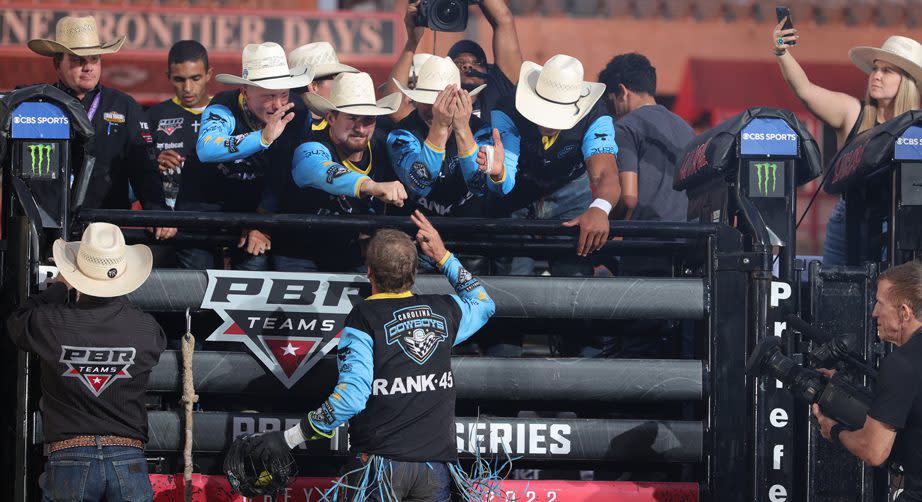A different driver's seat
- Oops!Something went wrong.Please try again later.
- Oops!Something went wrong.Please try again later.
CHEYENNE, Wyo. — Austin Dillon leans against a black metal railing, a cowboy hat on his head, cowboy boots on his feet and a cowboy shirt on his chest. He looks west, into the distance beyond the bull ring in front of him, as the sun buries itself in the vast Wyoming landscape. The sky swirls with red, orange and yellow, each bleeding into the other.
Dillon‘s focus returns to the rodeo arena in front of him. When a bull leaves the chute with a rider named Boudreaux Campbell perched atop his back, Dillon‘s body tenses. He‘s nervous, more than when he races his No. 3 Chevrolet for Richard Childress Racing, because when he races, he has some control over what happens. Now, as general manager of the Carolina Cowboys, a team in Professional Bull Riders‘ brand-new league, he is utterly helpless.
The bull — coincidentally named Dr. Campbell — bucks once, twice, three times, and somehow Boudreaux Campbell hangs on. With each buck of the bull, Dillon edges up the railing, as if by climbing he can somehow will Boudreaux Campbell to remain atop Dr. Campbell.
The seconds tick off on the way to 8, the number that declares a bull ride “qualifying,” meaning it will get a score; if Campbell falls off before that, it‘s an automatic zero.
Campbell‘s body contorts like it‘s made of rubber, his back bending like a giant C. Five seconds, six, seven … Dillon‘s hat is no longer on his head. It‘s in his right hand, and he‘s waving it over his head in giant circles, in beat with the bucks. Finally, mercifully, the horn sounds at the 8-second mark. The crowd, already frenzied, erupts.
The bull doesn‘t care about the horn and keeps bucking. Campbell reaches between his legs to separate his left hand from the rope it has been desperately clinging to. He goes flying off the bull and lands on his back. Even dismounts after successful rides look terrifying.
Campbell is barely off the bull and already Dillon has detached himself from the fence. He steps to his right, turns left to follow the metal pen and yells “BOOO!” on his way to find Campbell and squeeze him tight for producing the first 90-point ride in PBR league history. By the time this game is over, Campbell‘s epic ride will prove to be a major factor in the Cowboys producing the first win in franchise history.
For this night, at least, every decision Dillon makes as general manager works out.
And that‘s good news beyond the team‘s first win.
Dillon is in line to take over Richard Childress Racing from its namesake, his grandfather, Richard Childress. Childress tabbed Dillon to run the Cowboys. Dillon sees it as a chance to simultaneously prove himself worthy of and prepare himself for the race team. The better Dillon does overseeing the Cowboys, the more confidence Childress will have in him when he cedes control of the team he has run since 1969.
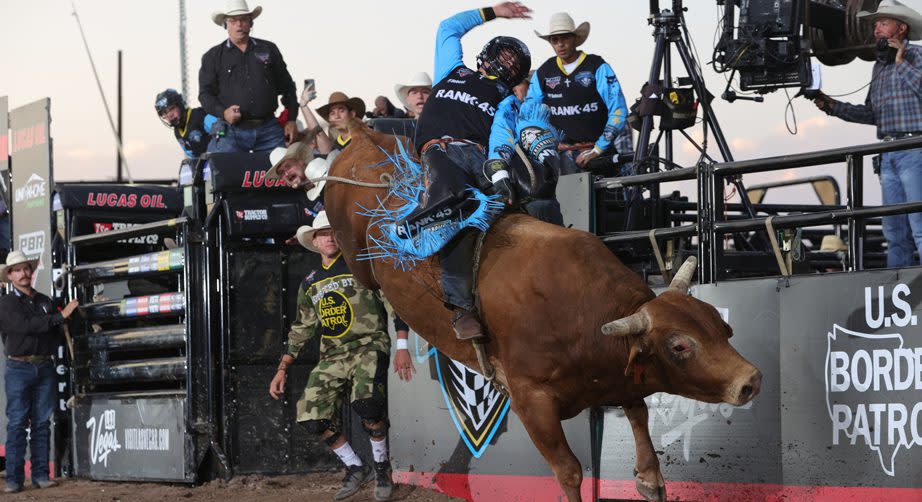
The debut of the PBR‘s team-based season was 15 years in the making. The relationship between Richard Childress Racing and PBR, the sanctioning body for the top bull-riding league in the country, dates back longer than that. Childress met PBR CEO Sean Gleason in the early 2000s, when PBR and NASCAR cross-promoted drivers and riders.
For more than a decade, contractual and logistical hurdles prevented PBR from creating the league. Momentum to turn the concept from idea to reality started to build about four years ago, and Childress was involved from the beginning.
Gleason admires Childress‘s success in NASCAR — six championships, 111 wins, 3,183 races and counting. Gleason also respects the fact Childress has run a multi-team organization for decades.
“Richard was the first person I spoke with outside the company about teams,” Gleason says. “When we finally had a good deck on the concept, he was the first person I sent it to.”
The Cowboys are owned by PBR and run by RCR. Of the eight teams, six are independently owned, and two are owned by PBR but run by others. RCR has an option to buy the team.
A COWBOY HAT FOR EVERYONE
The league‘s opening two nights were held in Cheyenne, Wyoming, in the middle of the 126th annual Frontier Days, a 10-day celebration of the Western lifestyle that calls itself “The Daddy of ‘Em All.” Imagine holding a NASCAR race in the middle of the world‘s biggest auto show, and you‘ll get an idea of how big of a deal this was.
The vibe felt like a local dirt track. The scope was Cup Series-esque. Into Cheyenne, the state capitol of 66,000 residents, come 500,000 visitors who inject $40 million in revenue into the region. They arrive from across the world to shop, listen to live music, peruse the local art scene, learn about cowboy culture and watch rodeos.
One evening, Dillon walked the Frontier Days midway with his wife, Whitney; his agent, Austin Craven; Cooper Davis, the 2016 PBR champion and member of the Cowboys; and Davis‘s young son. In an hour-plus out there, he was stopped a handful of times by NASCAR fans, and he obliged every photo request.
As the sun began to descend, Dillon arrived at a merchandise trailer to buy Carolina Cowboys gear, which he planned to give away to unsuspecting fans. When he saw their offerings, he discovered surprising news. They were nearly sold out of Cowboys items. According to the woman working the trailer, the Cowboys were by far the top seller among the eight teams.
Dillon bought one each of the few remaining shirts and hats and turned around to find fans to give them to. He settled on an elderly woman and presented her the shirt.
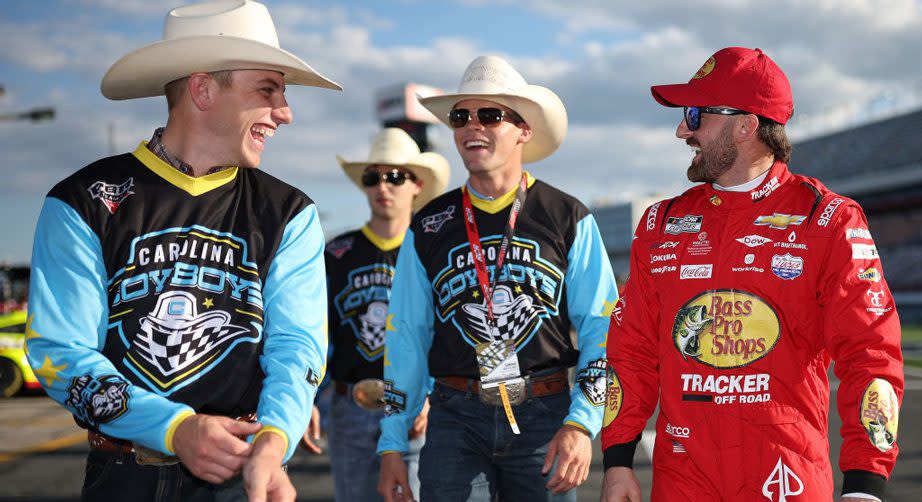
“Tell me your name,” she said.
“Austin Dillon.”
“Austin Dillon?”
“Yes ma‘am.”
Her husband, standing nearby, laughed.
“He‘s a NASCAR driver! Good grief! He drives a car 200 miles per hour. Golly. We‘ve got to get with the program here.”

They were saying that the bull riders would never do what Austin does. And Austin says he would never do what they do.
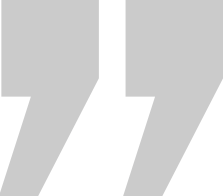
Dillon walked from there through the crowd. Fans jostled cheek to jowl, and Dillon navigated long rivers of people queueing up to buy meat on a stick, cowboy hats and more.
Amid that undulating mass of humanity, Dillon looked for a hatless kid upon whom he could bestow a gift. There weren‘t many, because walking the midway at Frontier Days without a cowboy hat is like going to a NASCAR race without your favorite driver‘s shirt.
Finally, he saw her, a girl of maybe 5 with blond hair turned white by the sun and eyes so blue the ocean would be jealous. He delicately approached her and her mom — he is a dad, and he knows it could be weird for a stranger to give gifts to small children. He asked the girl to root for the Cowboys. Her mom told her to say thanks, which she did, and soon Dillon was off in search of a cold Coke.
“Who‘s that?” the girl asked her mom as Dillon walked away.
“I think he‘s riding tonight,” her mom said.
“Nope, not me,” Dillon said out of earshot of the mom. “You won‘t catch me anywhere near one of them.”
Says Whitney Dillon: “I was talking to the bull-rider wives. They were saying that the bull riders would never do what Austin does. And Austin says he would never do what they do. So, I was like, ‘OK, but they‘re both crazy.‘”
CRAZY AND COURAGEOUS
As sports, auto racing and bull riding have little in common except that the participants must blend crazy with courageous. Even the most legendary bull ride lasts only eight seconds — the clock stops at that point. Pit stops, sweeping turns at superspeedways, even Dillon‘s infamous crash in July 2015 at Daytona all take longer than that. Step back, though, and the sports have much in common, and this explains (in part) why Dillon feels comfortable toggling between the two.
Riders and drivers arrive at the top of their sport the same way — by being led by their fathers. Riders and drivers rely on sponsorships for big chunks of their incomes. The eerie, nervous silence after a wreck in rodeo feels the same as the eerie, nervous silence after a wreck in NASCAR — and yes, both sports use the term “wreck.” The crowd reaction when the fallen rider gets back up is the same as when the window net drops on a crumpled car.
Danger is part of the allure of both. Fans watch not for the wrecks but for the tension created by the possibility of wrecks. With wrecks come injuries. To watch a bull rider walk is to feel the pain yourself. Everybody limps … or will soon. “But they keep going, week in and week out,” Dillon says.
They suffer broken legs and dislocated shoulders and … “How are the boys?” Dillon asks rider Junior Patrik Souza in the locker room before opening night. Souza smiles. He is dealing with, um, a groin injury, the result of being stepped on by a bull. Bulls weigh more than 1,500 pounds, and yet somehow Souza smiles again as he describes getting stomped where he really, really, R-E-A-L-L-Y did not want to. “I didn‘t take care of them.”
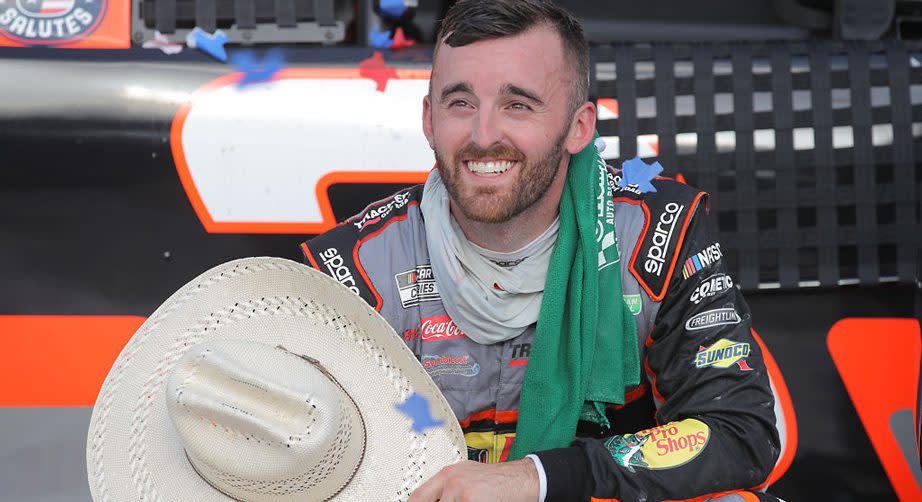
Dillon became a bull-riding fan as a boy. His dad, Mike Dillon, took him to local rodeos in Winston-Salem, North Carolina. Dillon looked up to the riders much like he looked up to race-car drivers. “They‘re like heroes to me,” Dillon says.
Dillon loves “the adrenaline, the intensity, the guys are just different.” He appreciates the positive influence cowboys have on his son, Ace. “It‘s faith-based, the manners — you come here, and chivalry is not dead,” he says.
That chivalry rubs off on him. “Cowboys are by far the nicest people you will ever meet,” Whitney Dillon says. “Every time I‘ve met any of them, they take off their hats for me. I love when Austin is around the cowboys, because when he comes home, he brings those mannerisms home.”
While he is a fan and likes and admires the riders, behind the scenes in Cheyenne, it is clear this is not play time for Dillon. He is in it to win. He has long aspired to be an executive for a professional sports team, and he wants to live up to the trust placed in him by his grandfather.
Already he has shown a willingness to push for changes. On opening night, the Cowboys lost, 337.75-257.25. Two other teams tied at zero. That put those two teams ahead of the Cowboys in the standings even though they had zero qualifying rides and the Cowboys had three. To Dillon, that made no sense.
The next day, he worked with other GMs to lobby PBR for a rule change. “Ties suck in all sports,” he said. He proposed using the fifth and final ride of each game as a tiebreaker, either based on score or length of ride before a cowboy was bucked off. “That idea got beat up a little bit,” he says.
Still, there was broad consensus that the rule needed to be changed, and that now was the time to do it before more games were played. Ultimately, ties greater than zero were left as ties. But ties at zero were changed to losses for both teams.
In Cheyenne, Dillon acted as businessman, cheerleader, brand ambassador and more. He was hands-on, sometimes literally: He and two riders push-carried the wheelchair holding Cowboys coach Jerome Davis, the 1996 champion who was paralyzed in a wreck in 1998, across arena dirt too soft for the wheels to roll.
He dug into details — which helmets to use, which wicking shirts work best, whether riders should wear their jerseys over their protective vests or under. He knows the bulls by sight, studies their tendencies, and strategizes with Davis about matching bulls‘ tendencies to riders‘ strengths, the rough equivalent of a baseball manager using his gut and analytics at the same time.
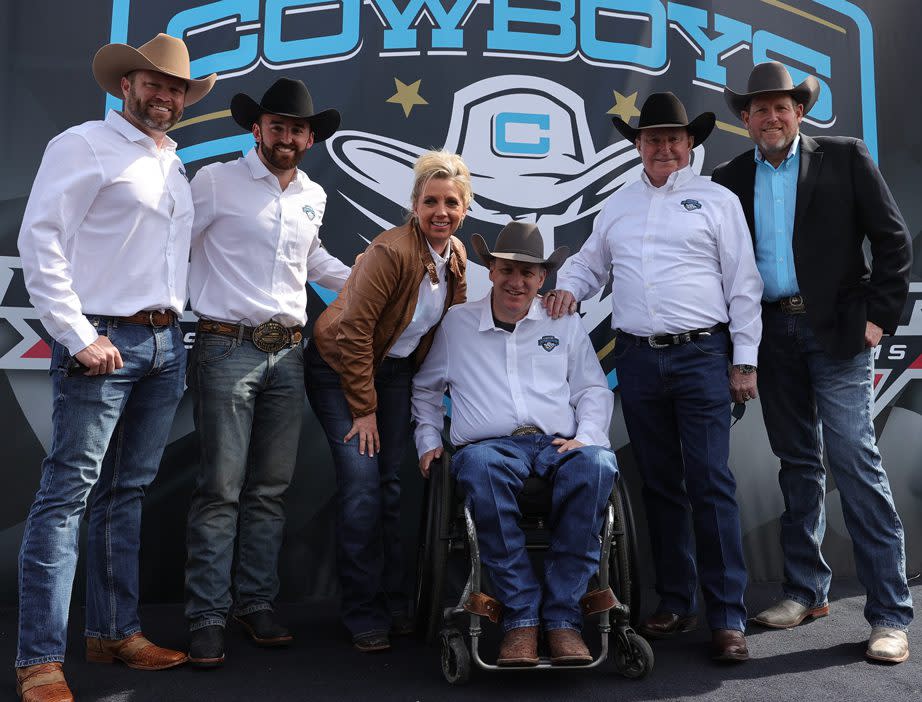
He has told the story of executing his stunning draft-day trade so many times he and Whitney joke she can tell the story as well as he does.
The Cowboys wanted Daylon Swearingen, the reigning individual champion. Davis and Dillon discussed ways to land him. To do so would take savvy, because there was no chance he would be available when Carolina picked at No. 7.
The league coaches ran a mock draft. “Cowboys are pretty legit honest about who they want,” Dillon says, and that‘s how Dillon and Davis knew the Texas Rattlers, who had the No. 3 pick, coveted Joao Ricardo Vieira (known as JRV), who won the regular-season title over Swearingen.
At first, Dillon tried to persuade the Rattlers to take Swearingen at No. 3, after which he would take JRV at No. 7 and package him with an extra pick. The Rattlers wouldn‘t bite on that offer, but they indeed took Swearingen third.
Using the seventh and 10th picks, Dillon drafted Cody Jesus and JRV. He made Texas another offer: Jesus and JRV for Swearingen and Mason Taylor, Texas‘ 14th pick. This time, Texas said yes. Dillon also dealt his No. 26 pick for Texas‘ No. 30. Overall, Dillon sent picks 7, 10 and 26 to Texas for Nos. 3, 14 and 30.
Childress was skeptical of the deal at first. Now he‘s delighted about his grandson‘s moxie in pulling it off. “Just like always, he came out on top,” Childress says.
The Cowboys‘ selection of Campbell is equally instructive about Dillon‘s philosophy of team building. Campbell is not just a great rider, he‘s also a great locker room guy with a personality as big as the bulls he rides. You never know what‘s going to come out of his mouth, but it will be followed by a devilish grin and flashing eyes. When the team laughed in Cheyenne — which was often — it was because of a Campbell wisecrack.
“He‘s 100 percent the glue,” Dillon says. “We picked him. He came down, sat at the table and said, ‘Damn boys, why don‘t they just give us the trophy?‘ I knew right there: We‘re in a good spot.”
BONUS TIME
The sun has long since set. The Cowboys have one ride left, the “bonus” round. Each team will pick one rider and one bull, and the results will serve as a tiebreaker.
The Cowboys went 1-1 in the opening games, which leaves them tied with four teams. A big bonus round ride would vault the team to second. A poor one would drop them to sixth. Dillon maneuvered to pick Swearingen precisely for moments like this.
Inside the chute, Swearingen squishes his hand under his rope that is tied around I‘m Too Legit‘s enormous girth. Satisfied his grip is secure, he subtly nods his head, the signal for the gate to be opened.
As Dillon watches with Whitney from a bar area overlooking the ring, I‘m Too Legit storms into the dirt, his front feet digging into the ground, his back feet flying high into the air.
Just as a great race win requires a great car and a great driver, so too does a great bull-riding score require a great bull and a great rider. As frenzied as I‘m Too Legit‘s bucks are, Swearingen not only matches them, he controls them, pushing his spurs into the bull‘s side to show who‘s in charge. The judges notice and reward him with a huge score — 92.5 — that pushes the Cowboys to second place.
Soon Dillon comes running around the corner again, just as he did after the first ride, to hug and high five everyone he sees.
